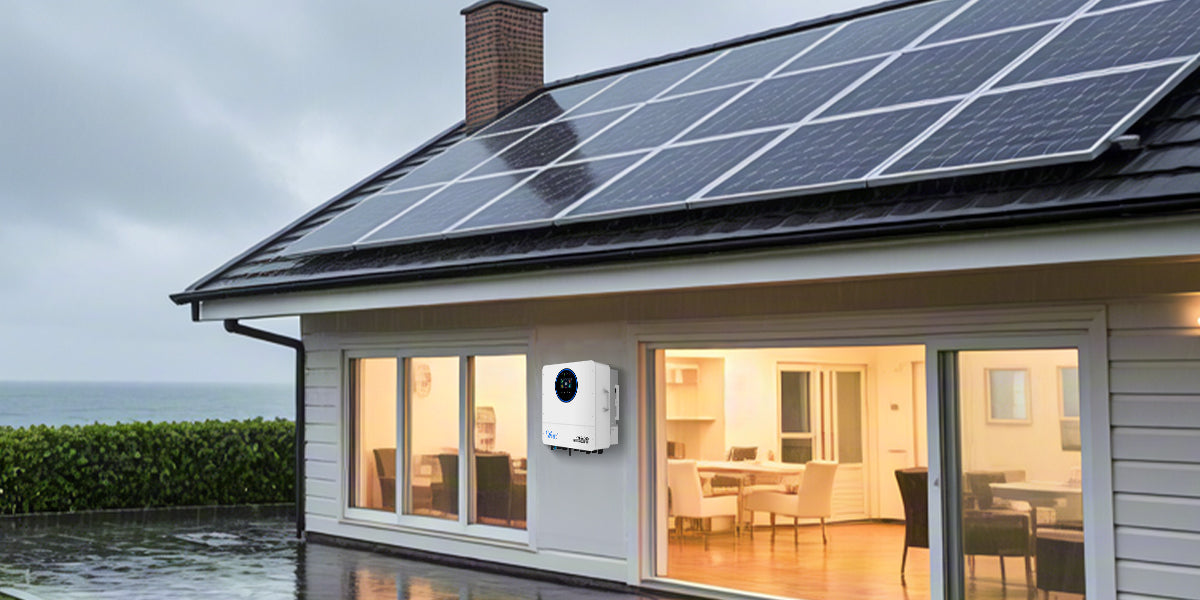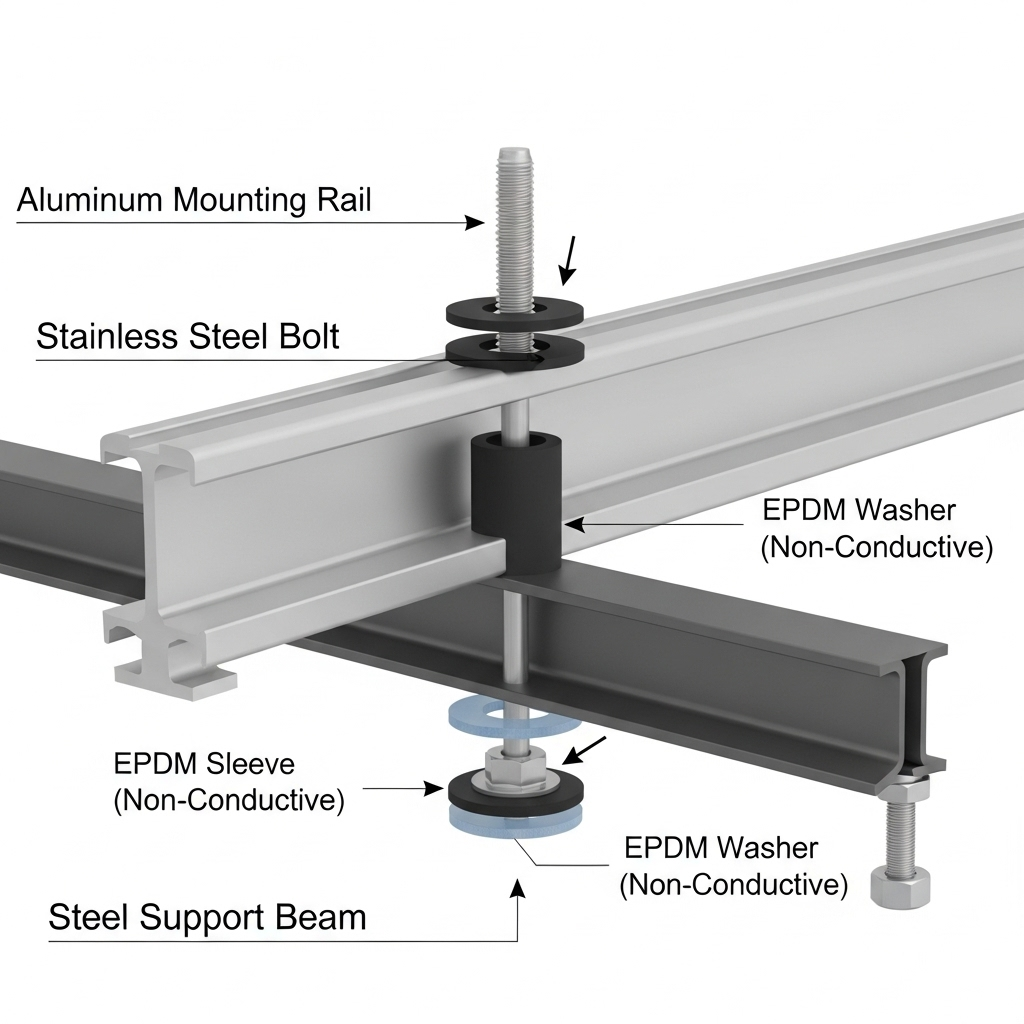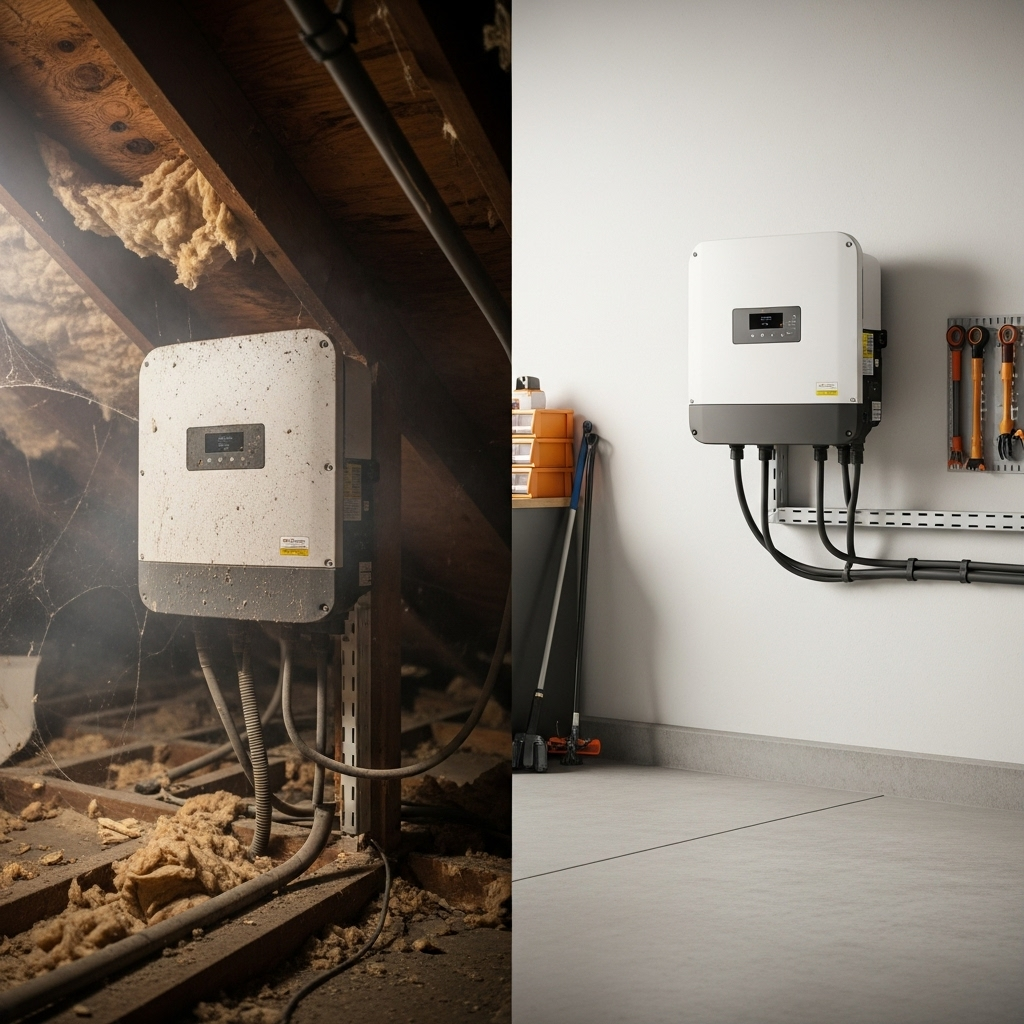Have you ever noticed your solar system's output dip on the hottest summer afternoons? That's often not a fault, but a protective feature at work. The performance and longevity of power electronics, especially solar inverters, are directly tied to how well they manage heat. This process involves two key concepts: thermal design and derating.
Effective thermal design is the engineering practice of controlling heat within an electronic device. Derating is the deliberate reduction of a component's power output to prevent heat-related damage. Understanding this relationship is fundamental to building a reliable and efficient energy system, whether it's for a home, farm, or off-grid cabin.
The Fundamentals of Heat in Power Electronics
Heat is an unavoidable byproduct of energy conversion. In any solar or storage system, managing this thermal energy is crucial for maintaining performance and ensuring the safety of the equipment.
Why Inverters Generate Heat
A solar inverter’s primary job is to convert the direct current (DC) electricity from solar panels or batteries into alternating current (AC) for use in your home. This conversion process is not 100% efficient. During operation, components like transistors (MOSFETs/IGBTs) and capacitors generate heat through two main processes:
- Conduction Losses: Heat generated due to the internal resistance of components as current flows through them.
- Switching Losses: Heat produced as transistors rapidly switch on and off to create the AC sine wave.
The more power an inverter processes, the more heat it generates. This makes thermal management a critical aspect of power electronics design.
What is Thermal Derating?
Thermal derating is an automated, self-preservation mechanism. When an inverter's internal temperature reaches a predefined limit, its control system reduces the amount of power it handles. This lowers heat generation and protects sensitive internal components from damage. Think of it like a marathon runner slowing their pace to avoid overheating. This protective measure is essential, but it also means you get less power from your system when it's hot outside. You can learn more about What Is Inverter Thermal Derating and Why It Kills Uptime?.
Key Factors Influencing Heat
Several environmental and operational factors affect how hot an inverter gets:
- Ambient Temperature: The higher the surrounding air temperature, the harder it is for the inverter to dissipate its own heat.
- Solar Irradiance: On bright, sunny days, solar panels produce more power, forcing the inverter to work harder and generate more heat.
- Ventilation: Poor airflow around the unit traps heat, accelerating the temperature rise.
- Enclosure Design: The material, color, and design of the inverter's casing play a role in how effectively it radiates heat. The IP rating can also have an impact, as explained in Does Altitude or IP Enclosure Rating Affect Inverter Derating?.
Core Principles of Effective Thermal Design
Manufacturers employ sophisticated strategies to manage heat. A well-engineered thermal design ensures the inverter operates efficiently across a wide range of conditions, minimizing the need for derating.
Passive vs. Active Cooling Techniques
Cooling methods generally fall into two categories: passive and active. Each has its place in inverter thermal management.
Passive cooling relies on natural processes like convection and radiation to dissipate heat. This typically involves large, finned heat sinks that increase the surface area exposed to the air. While reliable due to the absence of moving parts, there's a common misconception that Myth vs Reality: Bigger Heat Sinks Do Not End Derating on their own.
Active cooling uses mechanical means, such as fans or liquid pumps, to force the movement of a cooling medium (like air or a coolant). This is far more effective at removing heat but introduces components that can fail over time. The choice between them is a critical design decision, as explored in Passive vs Active Cooling: Which Minimizes Inverter Derating?.
| Feature | Passive Cooling | Active Cooling |
|---|---|---|
| Mechanism | Natural convection, radiation (heat sinks) | Forced convection (fans), liquid circulation |
| Reliability | High (no moving parts) | Lower (fans can fail) |
| Cost | Lower initial cost | Higher initial cost and maintenance |
| Effectiveness | Good for lower power densities | Excellent for high power densities |
| Best For | Residential inverters, lower power applications | Commercial inverters, high-temperature environments |
The Role of Component Selection and Layout
Modern thermal design goes beyond just cooling. The choice of internal components is critical. For instance, the use of wide-bandgap semiconductors like Silicon Carbide (SiC) or Gallium Nitride (GaN) can significantly reduce heat generation compared to traditional silicon components. This trend is a key part of Trend Watch: SiC/GaN Cut Heat, Redefining Inverter Derating. The physical layout of components on the circuit board also dictates how efficiently heat can be extracted and moved to the heat sink.
Understanding Derating Curves
Manufacturers provide a derating curve in their product datasheets. This graph shows the maximum power output the inverter can sustain at different ambient temperatures. Learning to read these charts is vital for system designers to select the right inverter for a specific climate. These curves provide a realistic expectation of performance, which is why we have Data-Backed Derating Curves for Solar Inverters by Climate.
Practical Strategies to Mitigate Derating
While thermal design is the manufacturer's responsibility, proper installation and system management are in your hands. These steps can significantly improve performance and reduce the frequency of derating events.
Proper Installation and Siting
Where you install your inverter matters immensely. Follow these best practices:
- Avoid Direct Sunlight: Install the inverter in a shaded, well-ventilated area like a garage or on a north-facing wall (in the northern hemisphere).
- Ensure Adequate Clearance: Leave sufficient space around the unit for air to circulate freely. Check the manufacturer's manual for specific clearance requirements.
- Protect from Elements: While designed for outdoor use, protecting the inverter from extreme weather can extend its life and improve performance.
These simple steps can make a huge difference, as highlighted in this Case Study: Rooftop Inverter Cooling That Halved Derating.
System Sizing and Load Management
Thoughtful system design can also minimize thermal stress. Slightly oversizing an inverter relative to the solar array means it will operate below its maximum capacity more often, running cooler and more efficiently. Additionally, managing your energy usage is a factor. A well-designed system considers all performance variables. As detailed in the ultimate reference on solar storage performance, inverter efficiency is not constant; it can vary significantly with the load. High operating temperatures that force derating will directly impact your system's overall output and its Levelized Cost of Storage (LCOS).
Advanced Thermal Management
For those interested in the deeper engineering aspects, fields like How to Engineer Inverter Thermal Paths to Prevent Derating focus on optimizing the entire heat-flow pathway from the semiconductor to the outside air. This includes techniques like improving the thermal interface materials and ensuring strong Thermal Coupling: Battery-Inverter Design to Avoid Derating in integrated systems.
The Bigger Picture: System Reliability and Longevity
Effective thermal management is about more than just immediate power output. It is a cornerstone of long-term system health and reliability.
How Thermal Stress Impacts Component Lifespan
Heat is a primary enemy of electronic components. The lifespan of critical parts like capacitors and semiconductors is inversely proportional to their operating temperature. A common rule of thumb in electronics, based on the Arrhenius equation, is that for every 10°C (18°F) increase in operating temperature, the component's lifespan is cut in half. By keeping the inverter cool, you are directly extending its operational life and protecting your investment. Ignoring this can lead to common 10 Thermal Design Mistakes That Trigger Inverter Derating.
A Holistic Approach to Energy System Design
In a modern energy storage system (ESS), the inverter does not work in isolation. It is part of an integrated unit that includes high-performance LiFePO4 batteries and a battery management system. Our approach to designing complete home energy storage systems considers the thermal interplay between all components. The entire system is engineered for thermal harmony, ensuring the inverter, battery, and other electronics operate within their ideal temperature ranges. This holistic view is central to the The Ultimate Guide to Thermal Design for ESS Inverters.
Moving Beyond Heat: Building Resilient Energy Systems
Heat may be an operational reality in power electronics, but it does not have to compromise your system's performance. Through intelligent thermal design from the manufacturer and thoughtful installation practices by the user, its effects can be effectively managed.
Understanding thermal design and derating empowers you to make informed decisions, whether you are choosing a new solar inverter or optimizing your existing setup. It shifts the focus from simply generating power to building a resilient, reliable, and long-lasting energy solution. This knowledge is a key step on the path toward achieving true energy independence.
Disclaimer: The information provided is for educational purposes only and does not constitute professional engineering or financial advice. Always consult with a qualified professional for system design and installation.





Leave a comment
All comments are moderated before being published.
This site is protected by hCaptcha and the hCaptcha Privacy Policy and Terms of Service apply.